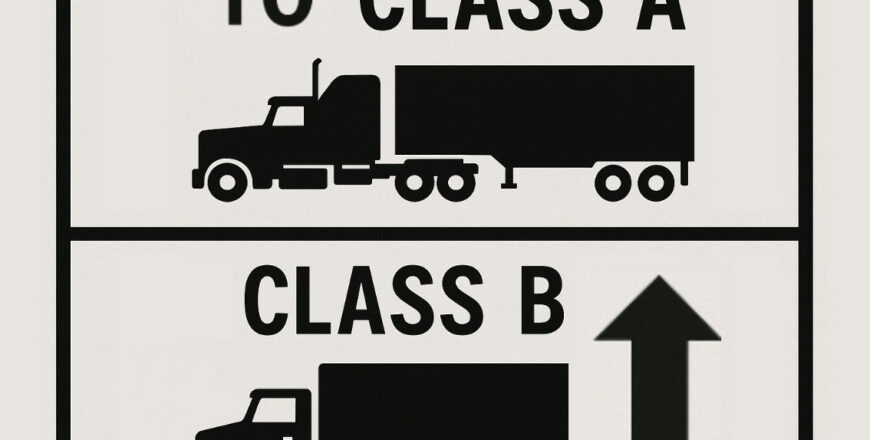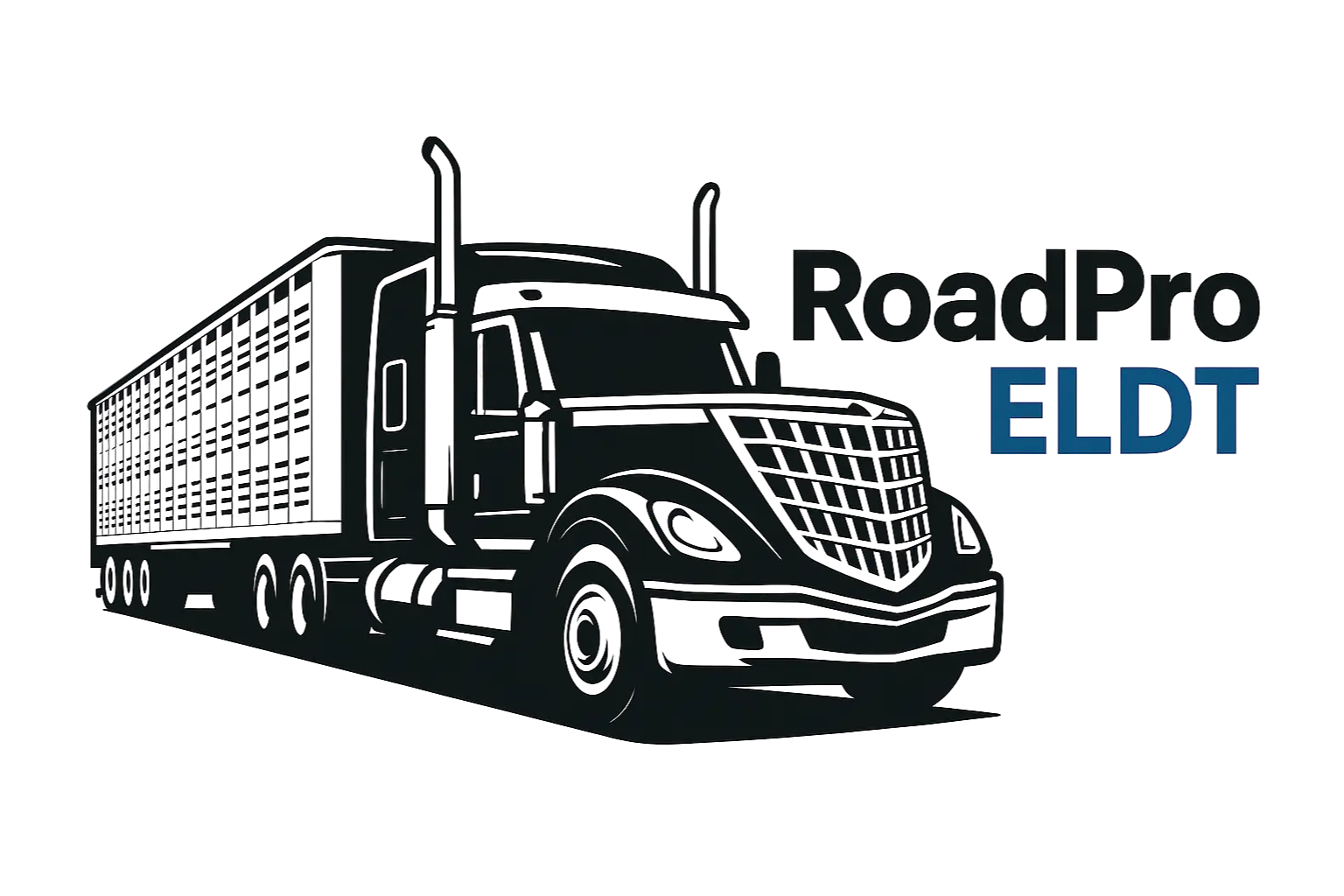Module 1 - Pre-Course
2
1.2 CDL Obtaining Process
4
1.4 Ensuring Safe Cargo Securement
5
1.5 State and Local Regulations
7
1.7 Serious Traffic Violations
8
1.8 Railroad/Highway Grade Crossing Violations
10
1.10 Medical Requirements
11
1.11 Federal Bridge Formula
12
1.12 Combination Vehicle Components
14
1.14 CMV Height and Low Clearance Limits
15
Test: Module 1 Quiz: Pre-Course
Starting
Module 2 - Instrument Panel
3
2.3 Transmission Operation
6
Test: Module 2 Quiz: Dashboard
Module 3 - Commercial Motor Vehicle (CMV) Inspection
10
3.10 Specialized Trailers
11
3.11 Post-Trip Inspection
12
3.12 Inspection locations
13
Test: Module 3 Quiz: CMV Inspection
Module 11 - Speed Management
1
11.1 Speed Management Overview
2
11.2 Calculating Stopping and Following Distance
3
11.3 Adjusting Speed to Match the Road Surface
4
11.4 Vehicle Hydroplaning
5
11.5 Speed Adjustment for Curves
6
11.6 Speed and Distance Ahead
8
11.8 Speed and Traffic Flow
9
11.9 Selectin Correct Speed on Downgrades
11
Test: Module 11 Quiz: Speed Control
Module 4 - Basic Control Task
1
4.1 Basic Control Overview
2
4.2 Starting and Shutting Down
3
4.3 CMV Starting and Stopping
4
4.4 Combination Vehicle Turning
7
Test: Module 4 Quiz: Basic Control Task
Module 12 - Space Control
1
12.1 Space Control Overview
2
12.2 Space for Entering/Crossing Traffic
4
12.4 Managing the Space Ahead
5
12.5 Space Behind your Vehicle
6
12.6 Managing the Space to the Side
9
Test: Module 12 Quiz: Space Control
Module 6 - Backing and Docking
1
6.1 Backing and Docking Overview
3
6.3 G.O.A.L. (Get Out and Look)
4
6.4 Straight Line Backing
5
6.5 Offset Backing (left and right)
8
Test: Module 6 Quiz: Backing and Docking
Module 5 - Shifting Transmissions (Manual)
1
5.1 Transmission Operations Overview
3
5.3 Shifting Down Methods
4
5.4 Multi-speed and dual range transmissions
5
5.5 Automatic Transmissions
6
Test: Module 5 Quiz: Shifting Operating Transmissions (Manual)
Module 7 - Coupling and Uncoupling Tasks
2
7.2 Steps for coupling tractor-trailer combinations
3
7.3 Uncoupling Tractor-Semitrailers
5
Test: Module 7 Quiz: Coupling and Uncoupling Task
Module 13 - Night Operation
1
13.1 Night Driving Overview
5
Test: Module 13 Quiz: Night Operation
Module 14 - Condition Check
2
14.2 Driving in Very Hot Weather
3
14.3 Driving in Very Cold Weather
5
14.5 Putting Tire Chains on a CMV
6
14.6 Inclement Weather Hazards to CMVs
7
14.7 Negotiating Sharp Curves
8
14.8 Driving on Steep Grades and Mountains
9
14.9 Braking on Down Grades
11
Test: Module 14 Quiz: Condition Check
Module 8 - Visual Searching
1
8.1 Visual Search Overview
2
8.2 Hazards Defined and How to Look For Them
9
8.9 Distracted / Hazardous Drivers
11
8.11 Pedestrians and Bicyclists
13
Test: Module 8 Quiz: Visual Searching
Module 20- Support
2
20.2 Why Maintenance Is Important
3
20.3 Regularly Scheduled Maintenance
4
20.4 Driver Responsibility
6
Test: Module 20 Quiz: Support
Module 16- Skid Control/Recovery
2
16.2 Emergencies While Driving
3
16.3 Braking During an Emergency
4
16.4 Skidding and Recovery
7
Test: Module 16 Quiz: Skid Control & Recovery, Jackknifing, and Other Emergencies
Module 9 - Communication Type
3
9.3 Communicating Your Presence
4
9.4 Warning Devices (Triangles)
5
Test: Module 9 Quiz: Communication Type
Module 10 - Distractions
2
10.2 Distractions from inside the vehicle
3
10.3 Distractions from outside the vehicle
5
10.5 Cell Phones – A Major Distraction
7
10.7 Mobile Phone Use and Penalties
10
Test: Module 10 Quiz: Distractions
Module 22- Environmental Compliance Issues
3
22.3 Driving and Emissions
4
22.4 Idling and Emissions
5
22.5 Reducing CMV idling times
6
Test: Module 22 Quiz: Environmental Compliance Issues
Module 24- Exhaustion
2
24.2 Fatigue's Root Causes
4
24.4 Preventing Tiredness
7
24.7 Physical Activity and Exercise
10
Test: Module 24 Quiz: Exhaustion
Module 15 - Hazard Awareness
2
15.2 Recognize Potential Hazards
4
15.4 Construction or work zone
5
15.5 Visual search and surveillance
6
Test: Module 15 Quiz: Hazard Awareness
Module 17- Railroad-Highway Grade Crossings
3
17.3 Warning Signs and Devices
6
17.6 Emergency Notification Systems
10
Test: Module 17 Quiz: Railroad - Highway Grade Crossings
Module 27- Whistleblower and Coercion
2
27.2 Whistleblower Protection
4
Test: Module 27 Quiz: Whistleblower and Coercion
Module 18- Identification and Diagnosis of Malfunctions
6
18.6 ABS (Antilock Braking System)
10
Test: Module 18 Quiz: Faults
Module 29- Substance Abuse
6
29.6 Post-crash Drug and Alcohol Exam
8
29.8 Refusal to Submit to an Alcohol or Drug Test
9
Test: Module 29 Quiz: Substance Abuse
Module 19- Roadside Vehicle Inspections
2
19.2 Roadside Inspection Focus
3
19.3 Levels of Inspections
4
19.4 Preparing for an Inspection
5
19.5 After a Roadside Inspection
6
19.6 Violating an OOS Order
7
Test: Module 19 Quiz: Roadside Vehicle Inspections
Module 21- Cargo Operations
1
21.1 Cargo Operations Overview
2
21.2 Driver Responsibilities
4
21.4 Loading and Unloading
6
Test: Module 21 Quiz: Cargo Operations
Module 23- Hours of Service Requirements
3
23.3 Hours of Service Ruling
6
23.6 Cases and Exceptions
8
23.8 Violation of HOS Rules
9
Test: Module 23 Quiz: Hours of Service Requirements
Module 25- Post Crash System
2
25.2 Steps after Accident
4
25.4 Post-crash Drug and Alcohol Testing
7
Test: Module 25 Quiz: Post Crash System
Module 26- Communication and Relations
1
26.1 Communication and Relations Overview
2
26.2 Verbal and Nonverbal Communication
4
26.4 Roadside Violations Results
5
26.5 English Communication
6
Test: Module 26 Quiz: Relations
Module 28- Cruise Plan
2
28.2 Route Planning Steps
4
Test: Module 28 Quiz: Cruise Plan
Module 30- Medical Operations
1
30.1 Medical Operations Overview
2
30.2 Medical Requirements
3
30.3 Medical Examination Process
4
30.4 Drivers General Requirements
7
Test: Module 30 Quiz: Medical Operations




